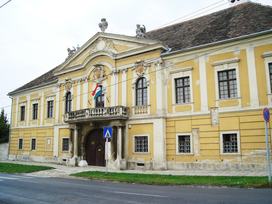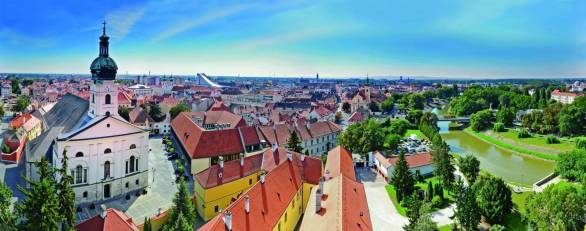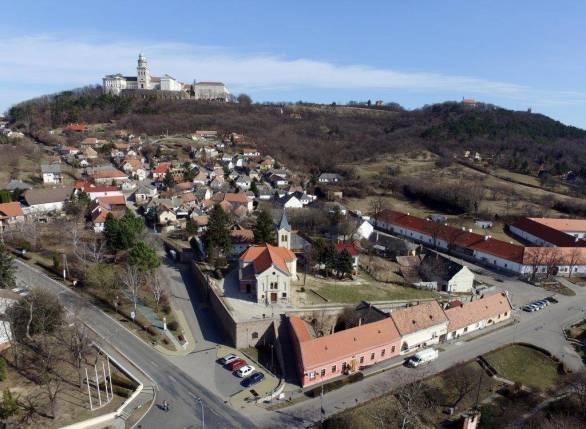Bishop’s Palace
There was already a fortified manor house on the bishopric of Győr’s Fertőrákos estate in the 14th century. King Matthias stayed here many times between 1481 and 1486 as guest of Bishop Orbán Dóczy (who the king also appointed bishop of the occupied Austrian territory after his occupation of Vienna).
In 1594, when Győr fell into the hands of the Turks, the summer residence now expanded into a palace became the centre of the bishopric. After the Turkish ravishes of 1683, the conversion of the palace to Baroque-Rococo began. The coats-of-arms of György Széchényi, Christian August of Saxe-Zeitz and Ferenc Zichy, who commissioned the works which took until the mid-18th century, adorn the main facade.
The ceiling of the upstairs dining room is decorated with a fresco capturing the “triumph of Faith”. There are plaster stucco decorations as well as pictures depicting scenes from Greek mythology and the Bible on the walls of several rooms. The remaining Rococo stoves were made by Károly Magner, a master craftsman from Győr. Bishop János Simor established the first glass-painting workshop in Hungary here, which was in operation until 1867.
The palace’s vaulting features an allegorical fresco and its altarpiece depicts the coronation of the Virgin Mary and the Holy Trinity. There was once an ornamental garden with fountains around the palace and in front of its facade. Two huge vaulted cellars extend beneath the building. Legend has it that the passage starting from one, fallen in today, may have led to the forest beyond the stream or all the way to Sopron.


